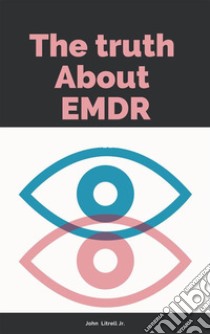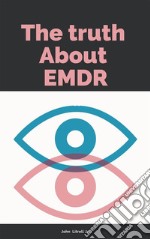The Truth About EMDRLa verità sull EMDR . E-book. Formato PDF - 9788832552058
di litrell J.
edito da ELTON KAZANXHI , 2019
Formato: PDF - Protezione: Filigrana digitale
<br /><br /><b>The Origins of Eye Movement Integration method </b><br /><b>by Connirae Andreas </b><br /><br /><b>"Some time ago we wrote up a history of Eye Movement Work, because people kept asking us. The attached article includes what we (Steve and I) know (and don't know) about EMDR history. Hope you find it useful" Connirae Andreas, December 18, 2016 </b><br /><b>History of Development In 1989 or early 1990, when Francine Shapiro was just starting to teach EMDR, one of our trainers called us up and asked us if we knew about it. (I would need to investigate a bit to be sure of the year. I’m fairly certain it was 1989. At the latest it was early 1990.) This trainer lived in the Bay area at the time, and had just attended a workshop with Francine. He described the method to Steve on the phone, plus Francine’s explanation for why it worked.<br />The EMD method was that the therapist would ask the client to think of the traumatic memory, and then hold a pencil up in front of the person's eyes, and move it rapidly back and forth in a straight horizontal line, left to right, asking the person to follow it with their gaze. Francine included quite a bit of theory about why it worked in the training: She talked about the two hemispheres of the brain, said that the phobic or trauma response was the result of a hemispheric imbalance in the brain, and that the back-and-forth eye movements from left to right “balanced the hemispheres.” </b><br /><br /><br /><b>After he hung up the phone, Steve explained the method to me (Connirae). I immediately had the guess that if there was a useful change that happened, I thought it was probably not so much the result of “hemispheric balancing” (as Francine was assuming), but might instead be more accurately described as “integrating and connecting different kinds of brain processing modes.” </b><br /><b>At that time, the field of NLP already included the “eye movement model”, which posits that eye movements in different directions are associated with different kinds of brain processing. (The model is as follows: Looking up to the left indicates Visual Memory, looking up right indicates Visual Construct, or creative imagery, looking down left indicates Auditory digital/verbal processing, looking down right indicates Kinesthetic or feelings. Looking straight left indicates Auditory tonal recall, straight right indicates Auditory construct.) </b>
Ean
9788832552058
Titolo
The Truth About EMDRLa verità sull EMDR . E-book. Formato PDF
Autore
Editore
Data Pubblicazione
2019
Formato
PDF
Protezione
Filigrana digitale
Punti Accumulabili


